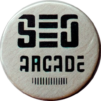If you missed it, “Jack Chambers-Ward” was in charge of the instructive #SEOchat on Twitter. These tweets are packed with information, but because they appear and disappear so quickly, you could miss them. I tried to gather and reference all of those remarks. Jack Chambers-Ward: Podcaster, SEO specialist, D&D player, wrestler.

Our journey commences with A1, where the discussion unfolds on the significance of linking from the homepage. Darth Autocrat emphasizes the importance of a natural flow in homepage navigation, shedding light on the impact of Google crawlers and the value of strategic internal linking. Sweepsify adds another layer, highlighting the signaling effect of links from the homepage, especially when limited in number.
As the dialogue progresses in A2, experts like Lisa Schneider and Travis delve into the challenges of siloed teams and emphasize the need for cross-team reviews. The discussion sheds light on the importance of clear communication and mutual understanding between teams, ensuring a collaborative approach to SEO and content strategies.
The conversation takes an intriguing turn in A4, where Lisa Schneider and others navigate the delicate balance between SEO considerations and limited budgets. The panel shares insights into integrating SEO from the project’s inception, allowing for strategic freedom in marketing endeavors.
In A5, the panel discusses the coexistence of creative freedom in naming products and SEO optimization. The consensus is that SEO is not just about keywords but is deeply connected to the user journey, challenging misconceptions.
As the experts explore the dynamics of internal links in A6, Sweepsify and Elizabeth Rule advocate for diversifying anchor texts for a natural and helpful user experience. The discussion unravels the complexities of history-based and static breadcrumbs, offering insights into their applications based on UX and site engagement.
Yes & Yes. Homepage, and/or any prominent (2nd level, heavily internally linked to) page. You can also work your way along the “branches”, (do it backwards, and link from parent, grandparent … through all the ancestors to root (home)).
Darth Autocrat (Lyndon NA)
A1: Only if it is a natural flow from the home page navigation. Otherwise, it would just get visits based on the users’ interest in the page. Regarding indexation, Google crawlers are too slow for this no?
Sweepsify
A1: A link from the homepage is a signal that the page is important to the site as PV is passed directly to it. Even better if there’s a limited number of links from the homepage. Also very likely to help it index more quickly for the same reason.
Boyd Lake SEO
Update as you update content … have a new really important whatever you created… update
Mordy Oberstein
and “that” is the problem, esp. with “blog” type setups. Dynamic, rolling links mean that after a duration, the internal links disappear, which may impact ranking (esp. if the majority of inbound links go to the HP, not deeper hub/parent pages).
Darth Autocrat (Lyndon NA)
Regularly. I’d have a featured blog on the home page carousel. Means fresh content. Plus if you’ve got a slightly older blog post that is relevant again you can link to it easily.
Tom B
I flush my link juice down the toilet that’s just how I am #seochat
Mordy Oberstein
how much link juice do those internal links pass on? …” No idea – we don’t know if Internal Links work the same as External/Inbound Links. They might treat them together, or allocate X% of page value to Internal, Y% to Outbound, or Internal may only pass n%
Darth Autocrat (Lyndon NA)
I’m just here for that excellent Muppet gif work.
Andrew ‘Optimisey’
Yes, you can have too many outbound links internal on a page. I have always followed the rule of the first link crawled on a page is the one that matters most, and the rest have “less value”. The entire page shouldnt be blue
Elizabeth Rule
As I understand it … yes. But it’s not straightforward/simple. G handle links based not only on the quantity of them, but where they are, and how often they are seen. So “boiler plate links” (typically site nav, footer nav etc.) are meant to pass less.
Darth Autocrat (Lyndon NA)
Actually pretty sure
@CyrusShepard covered this on a webinar he did with
@geochingu & myself – tons of data on internal links https://wix.com/seo/learn/amp/internal-linking-webinar
Mordy Oberstein
Tough question/issue. Static makes perfect sense, and has the least offensive UX issues for sites with strong and simple architecture. Historic (dynamic) ones can be a little confusing for some users (if they use the site/set of pages frequently), but not Bots!
Darth Autocrat (Lyndon NA)
A5: History based if the majority of site engagements are based on search (e.g. shopping site). Category based if a search and organic navigation would yield the same result. Both? Ecommerce websites for sure
Sweepsify
A5: I have never used history-based breadcrumbs but I sure want to! Static is a great way to show Google bot the hiearchy of your pages, history based would be ideal for UX. Anyone who knows how to effectly combine these let me know! I need exmples
Elizabeth Rule
Both! (Secret technique No. 148) If you plan ahead, and schedule minor refinements/changes in your content, including Titles and Headings, it makes sense to update a few Internal Link Texts too. BUT Minor variations only (strong similarity throughout!).
Darth Autocrat (Lyndon NA)
A6: It depends on the niche and your goal. If you are looking to drive traffic to a funnel no matter what page they land on less diversity needed. However, I think a certain percentage of external anchor texts need to exist for to satisfy Google.
Sweepsify
A6: Yesss diversify all the links! When I see a page’s internal link profile has only ONE anchor text variation I cringe. Make your anchor text natural & HELPFUL for users, NOT keyword stuffy. Link to pages that make sense for the context, not just to boost rankings
Elizabeth Rule
From the importance of internal links to the nuances of link juice distribution, this discussion has traversed the labyrinth of SEO strategies and practices.
The debate on the frequency of updating internal links sparks contemplation. Darth Autocrat suggests a methodical approach, advocating for updates aligned with content refreshes. Simultaneously, Mordy Oberstein raises the crucial concern of dynamic links fading away in blog-type setups, leaving us to ponder the delicate balance between dynamism and link longevity.
The discussion on outbound internal links sheds light on the enigma of link juice. Elizabeth Rule and Darth Autocrat navigate the intricacies, with Elizabeth suggesting the first link on a page carries the most weight. Yet, the mysteries of how Google precisely handles internal links remain unsolved, echoing the sentiment that SEO, despite its evolution, harbors elements that elude definitive understanding.
The concept of breadcrumbs further adds to the tapestry, with perspectives on static versus history-based implementations. Sweepsify expresses curiosity about combining both approaches for an optimal user experience, reflecting the perpetual quest for innovative solutions in SEO design.
In the realm of anchor texts, the experts encourage diversity and natural language usage. Sweepsify advocates for a diversified internal link profile, stressing the importance of context over keyword stuffing. The wisdom shared hints at a more nuanced approach to internal linking, emphasizing user-centricity and organic contextual relevance.
As we bid adieu to this discourse, the conversation continues in the comments. Your thoughts and insights are welcomed, creating a collaborative space for further exploration and refinement of these SEO practices. Until the next enlightening discussion, may your SEO endeavors be guided by these expert insights from the #SEOChat community.
